Don’t Leave the Mirkwood Trail!” A Masterclass in Good Writing
By Brent Hartinger
When I read The Hobbit as a kid, the sequence in Mirkwood Forest really stuck with me.
Bilbo and the company of dwarves are desperate to get to Lonely Mountain, in order reclaim a great treasure. But to get there on time, they must past through an ancient (and very dangerous!) forest called Mirkwood.
The wizard Gandalf suddenly has pressing business elsewhere — of course! — and he can’t accompany them into the wood. (In fairness to Gandalf, he has already saved their butts quite a few times.) The good news is that mystical elves once created a magical pathway through the forest that still exists, allowing travelers to avoid the dangers in the trees. Before Gandalf departs, he gives them stern advice: “Don’t stray off the [path]—if you do, it is a thousand to one you will never find it again and never get out of Mirkwood; and then I don’t suppose I, or any one else, will ever see you again.”
In my mind, this is just a fantastic set-up. It’s obviously a “character” test of sorts.
And, of course, it’s also a great fantasy genre bit. Some impossibly old forest full of ancient evil that is held back by powerful, but fading elf magic? How will our inexperienced and mostly non-magical hero and his friends survive this peril?
As a kid, I remember thinking, “There is no way I would ever leave the forest path, no matter what happened!”
So how does the sequence actually play out? It’s a master class in good writing, so let’s unpack it, shall we?
The first thing the adventurers learn upon entering the forest is that the path is very, very narrow. So narrow, in fact, that they must walk single-file. That immediately ups the challenge of never leaving the path, doesn’t it?
For a bit, there is light through the trees, but soon it is all but cut off. So now the path is narrow and dark. There is just enough light to see impossibly thick cob webs (which is great foreshadowing). But the webs are somehow kept off the path itself by its magic. The adventurers are safe … for the time being.
Then the claustrophobia sets in. The party starts to feel like they’re being suffocated, even the dwarves who are comfortable being underground. It’s even worse at night when strange, unidentified creatures stare out of the darkness with red or yellow or green eyes. And even — shudder — the pale eyes of what seem to be giant insects! But whenever they shine the light into the trees, the creatures slip off into the shadows. Worse, their lights attract horrible giant moths.
Great atmosphere, huh? At this point, it should also be clear that the forest itself is the antagonist for this part of the story, and it’s a damn good one.
That said, Bilbo and company are still protected by the magic of the forest path. The wood is certainly creepy, but the danger still can’t actually touch them. So as long as they keep their wits about them, and follow Gandalf’s advice, they might be okay.
Then the path comes to a bridge over a stream … and the bridge is out! There’s a boat that can be used to cross, but — wouldn’t you know it? The boat is on the other side of the water.
Please note what Tolkien is doing here, how cleverly he is ratcheting up the tension: the characters have no choice but to leave the path, at least to try to get across the river.
The boat doesn’t even look like it’s tied up on the other side, so if they were to throw a grappling line across, they might be able to get it.
In other words, the forest is tempting them: You’re not really leaving the forest path! You’re just trying to get the boat, so you can continue on.
Suddenly the vow I made as a kid — that I would never leave the path, no matter what happened! — now seems a bit more difficult to keep; everyone’s expectations are nicely thwarted. Sure enough, getting the boat proves much easier said than done. Then when they finally do get the boat to their side of the river, it doesn’t have oars!
They do eventually manage to get across the river and are about to step back onto the path. Whew! But at that second, a deer bolts from the forest, surprising Bombur, who falls back into the water. Which is, of course, enchanted by the evil of the forest.
Despite their best intentions, the party has now left the path. Is that enough to ruin everything? The tension goes higher still.
They continue on, but the evil of the forest has breached the party. Slowly but surely, their despair begins to eat at them. They even send Bilbo to the top of a tall tree to see how much farther they have to go. Tolkien tells us they’re actually not that far from the end, but they’ve chosen the wrong tree (or perhaps the forest has guided them to the wrong tree!), and from there, their journey looks all but hopeless.
Next they run out of food, and as the days go on, they begin to starve. Now the forest tempts them with the sounds of a nearby hunting party, and the delicious smells of roasting meat, seemingly not too far off the path.
Finally, they agree to leave the path together in search of food. (Small quibble: I think even now it should have taken more than this, a bit more infighting at least, to get them to voluntarily leave the path. But hey, he’s J.R.R. Tolkien, and I’m not.)
And by leaving the path, things naturally go from bad to worse: from giant spiders, to vengeful wood elves. They eventually do get out of the forest again, thanks to Bilbo’s quick thinking — perhaps they were the one in a thousand Gandalf was talking about.
All in all, it’s a terrific sequence in a terrific book! It haunted me as a kid, and I still love it now.
But I confess: I was very disappointed in how this was dramatized in Peter Jackson’s movie adaptation, The Hobbit: The Desolation of Smaug. It looks pretty amazing, and I do love the addition of the cool elven gate at the beginning of the forest (not in the book). But as is typical of The Hobbit movies, they go way over-the-top, immediately turning the forest into a kind of Escherian stairway. It’s too much, squandering the subtle build of the book’s rising tension.
Even worse, it violates that great rule that has been laid out for the characters (and the viewer): the characters are safe as long as they don’t leave the path. Here, Bilbo and company quickly become so groggy and confused that the spiders basically attack them on the path.
As I said, the whole narrative point of Mirkwood is that it’s a character test: Can they resist giving into temptation and despair? Instead, the movie plays it like a silly set piece.
Brent Hartinger is the author of the gay teen classic Geography Club, which was adapted as a feature film in 2013. His latest book (which includes Geography Club‘s Russel Middlebrook as an adult) is The Otto Digmore Decision. Visit Brent at brenthartinger.com or on Twitter or Facebook.
More pictures and other info here: https://www.brenthartinger.com/press
People are staring at me, and I’m in the moment, and I want it to go on forever.
I’m boarding a plane in Seattle, and even the other First Class passengers have their eyes on me as I store my bag above my seat. One women is staring so intently her dangly earrings don’t move, and I’m glad I wore my Vince V-neck because I like the way it makes my chest look. The first person to actually talk to me is a teenage girl who’s managed to work her way up from the aisle of Business Class.
“Sorry,” she says. “Are you Otto Digmore?” “I am,” I say with my practiced modesty. She holds up her phone, a bit meekly, meaning she wants to take a selfie with me. “Sure thing,” I say, cool and confident. She steps toward my left side — they always step to my left side, at least if they have any say in the matter, as far from my right side as possible. I’m still not sure if it’s because they’re afraid to get too close to the right side of my face, or if they think it’ll make a better photo if it isn’t covered up.
The girl and I lean in close — her shampoo smells fruity, like fake strawberries — and out of the corner of my eye, I see her face suddenly light up like a Christmas tree, sparkling. I smile too, but more like cool neon, and she snaps the picture. I wait for her to check the screen, then smile apologetically and lean in for a second shot — they always want a second shot — and I smile again, exactly the same as before. By this point, the flight attendant has appeared, and she’s all business, directing the girl back to her seat, then standing between me and the aisle, because she knows this could start a chain reaction and lots of other people will want selfies too, unless she puts a stop to it right now.
With the girl gone, I squeeze past a businessman in the aisle seat — he has white hair but actually looks kind of boyish — and I sit down next to the window. “Can I get you both a drink before takeoff?” the flight attendant asks. “I’ll have a martini,” the businessman says, but he’s staring at me. I know it’s partly because he’s recognized me, knows that I’m famous, but he wouldn’t be able to say why. “Bottled water, please,” I say.
Before she leaves, the flight attendant leans in and whispers to me conspiratorially, “You’re the best part of Hammered.” The businessman grins: he’s realized I’m an actor on a TV show. Finally, he has an explanation for his recognizing me, and for the girl wanting to take that selfie. “Thanks,” I say to the flight attendant, “that’s so nice of you to say.”
Hammered is a sitcom on the CW network, about this guy named Mike Hammer and all his friends in a college dorm — mostly about how they’re always getting drunk and getting laid. I play Dustin, one of the other guys in the dorm, even though I’m actually twenty-six years old. It’s a supporting role, but I am a regular cast member, not just featured. The show debuted in June, and me and my character ended up getting a lot of attention. I even got invited to be on both Stephen Colbert and Jimmy Kimmel — the last guest slot on both, true, but I was the only actor from Hammered who was asked. It’s the start of October now, and my life has been turned upside down. Somehow I’ve become a celebrity. And people stare at celebrities, and ask to take selfies, and generally make a big fuss. It’s taken a while to get used to being famous — to being the center of attention. The publicists at the studio all said the same thing: You’re an actor, so think of being famous as a role you’re playing. You’re playing the version of “you” that your fans most want to see, someone humble and charming and accessible, and also cool and confident and hip. Your fans want to like you, so give them lots of reasons to do that.
This was good advice. And so for the last four months, I’ve been playing two roles: Dustin, my role on Hammered, and Otto Digmore, the celebrity I want everyone to like. As an actor, Iknow that the most important part of acting is about being present, being in the moment, or at least seeming that way, even if you’re not necessarily feeling itBeing famous is the strangest role I’ve ever played. But being on Hammered, and being famous, isn’t the reason I’m feeling so good right now. I’ve just come from the weekend wedding of my friend Russel Middlebrook to his longtime boyfriend, Kevin Land. I wasn’t in a very good mood when I got there — the reason why is a long story — and I hadn’t expected to have a very good time. But it was amazing. I even sang a song I wrote for the occasion, and it went over really well. The wedding was earlier today — it’s evening now — and I’m still on a high. So right now it’s easy to give off the sense of being humble and charming and accessible, and also cool and confident and hip. I barely have to act. “Going to L.A., huh?” the boyish businessman with white hair asks me, and I’m aware it’s a stupid question — we’re on a plane to Los Angeles, obviously. But I smile and nod, because I know it’s an excuse for him to talk to me, to tell his friends and maybe his kids that he spoke to Otto Digmore, an actual celebrity.
I turn and look out the window, but the lights are still on inside the plane, so all I see is the reflection of the First Class cabin in the clear plastic. I also see my face — the whole right side. It’s covered with scars. In some places, it looks a little bit like my face is melting. This is the other reason the businessman was staring at me. The good news is that I still have both my eyebrows. I have more scars too. They run down onto my shoulder and chest, hidden by my clothes, and also up under my hairline. Most of my hair is real, but one small part of it isn’t — it’s a hairpiece that’s woven into my actual hair. It was really expensive, and it has to be adjusted every three weeks, but it looks real. Not even my friend Russel knows about it. When I was seven years old, I had an accident with some fire. I tell people I was playing with matches and some gasoline I found in the garage. I’ve never told anyone the truth, not even my parents or the therapist. I wanted to be Pyro, the X-Man who can control fire. I wasn’t quite stupid enough to pour gasoline on myself, but I poured it on these Nerf sponge balls that I was going to light and throw. Didn’t quite work out that way. I know I was in a lot of pain for a long time, but I don’t remember any of that. I guess I’ve blocked it out. There isn’t any pain now, and I don’t even notice if my skin is tight or anything — it just feels like me. But I have to be careful, because the smell of gasoline can still sometimes set off a panic attack.
My scars used to be worse. As I got older, I had surgeries and skin grafts, and the scars also healed more than any doctor ever told me they would. But it’s impossible not to see them. If you touch them, they feel both smoother than other skin, and also thicker. Whiskers don’t grow there, so I also have to shave every day, otherwise I look like I only have half a beard. That’s probably the least of my worries, looks-wise, but it still makes me feel self-conscious. Sitting in my window seat, I hear a scraping out on the tarmac, and I lean forward to look outside. I still can’t see anything, only my own reflection in the plastic, but now I see the other side of my face, which looks like everyone else’s — no scars. It’s not like there’s a clear dividing line between the two halves of my face, but if you only see me from the left, you can’t see the scars at all. I know it’s weird that someone like me chose to become an actor, but it’s what I’ve really wanted to do ever since high school. It’s ironic that people stared at me even before I was a celebrity. They’ve stared at me for as long as I can remember. I could say that it’s been really traumatizing, and it probably has been, but it’s hard for me to know for sure, because that feels like me too. How people treated me before the accident is another thing I don’t remember. But the way people stare at me is definitely different now. Before, I could always feel the pity. Now it’s mostly people with smiles on their faces and admiration in their eyes. Because I’m on I’m one of the cool kids. That’s never been me before.
“Here you go,” the flight attendant says, putting my bottled water on the beverage holder on the armrest and giving the martini to the businessman. “Can I get you gentlemen anything else?” “Nah, I’m good,” I say, and I realize that the businessman is looking at me, leaning forward a half inch or so, trying to get a better look at the scarred side of my face. I unscrew the top of my bottled water and lift it in sort of a “Cheers!” motion. The businessman joins me, smiling awkwardly, and we both drink. It’s strange to think that a big part of the reason I’m a celebrity now is because of my scars. It was sort of a fluke that the producers hired me. My agent somehow managed to get me an audition, and the producers liked me so much that they ended up creating a whole new character for me, basing him on my own experiences, writing my facial scars into the storylines. Then me and my character started getting all this attention. I stand out because I’m so different. That’s ironic too, because I’ve been acting forever, but for a long time I couldn’t get any parts at all, except as zombies in student films, and as the Elephant Man and the Phantom in The Phantom of the Opera in college productions. Who would have thought that burning myself with gasoline when I was seven would have turned out to be a pretty good career move? But it did kind of work. Almost everyone in the plane is seated now, and they’re getting ready for takeoff. We’ll be in the air soon with all our media devices turned off, but I decide to text Spencer, this guy I’ve gone out with a few times. Sup? I write. I had a great time at the wedding, but I really missed you! “Can I take a picture?” a voice says. I look over, and it’s a kid in the aisle, maybe ten years old, holding up his phone. I glance at the businessman, apologizing with my eyes, but he’s more impressed than anything. I also look around for the flight attendant, but she must be up in the galley pouring more drinks. So I say to the kid, “Sure thing,” cool and confident again. Then I squeeze my way back out into the aisle.

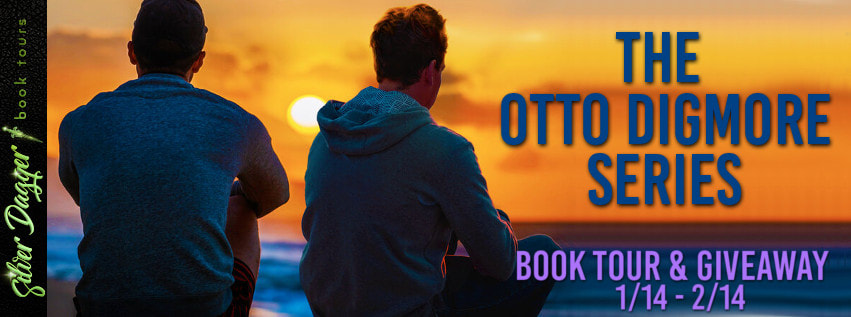

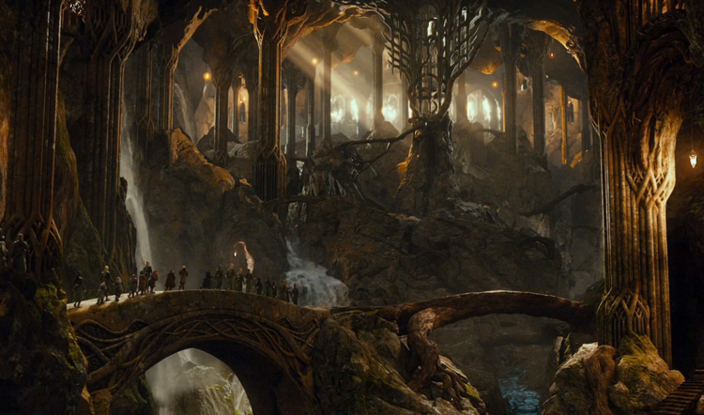

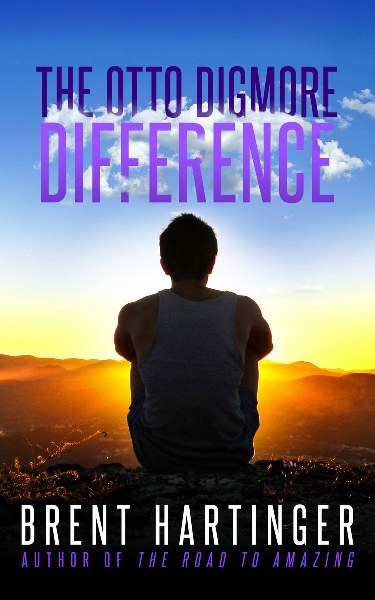

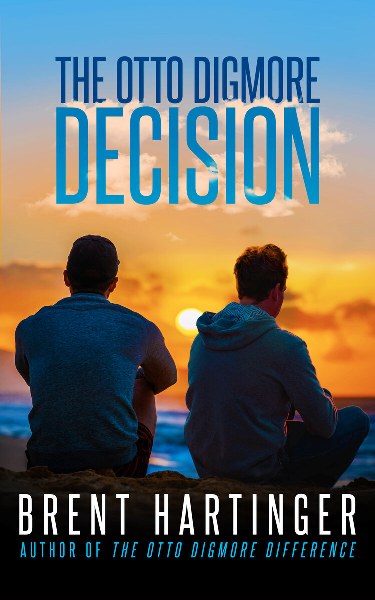



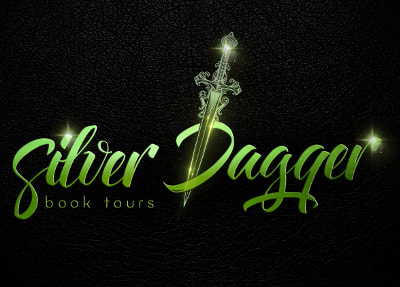
I liked that cover! Hartinger’s stories always amuse me. 🙂
Thank you!
The covers for the books are very eye catching.
I so love the hobbit
It’s one of my favorite books
The cover’s appealing to look at. The story sounds quite good. Much success, Brent!
Thank you, I appreciate that.